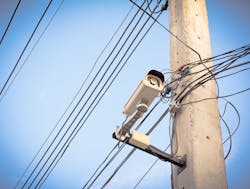Proliferation of video heightens privacy paradox
With the spread of video capability from cameras to iPhones, it is no wonder that the standard limiting warrantless use of video surveillance by law enforcement is evolving. When discussing the concept of surveillance not supported by a search warrant, the U.S. Supreme Court held in U.S. v. Katz: “[W]hat a person knowingly exposes to the public, even in his own home or office, is not a subject of Fourth amendment protection.” Katz posits a two-part inquiry: First, has the individual manifested a subjective expectation of privacy in the object of the challenged search? Second, is society willing to recognize that expectation as reasonable?
Recent decisions have focused on three areas to help determine reasonableness under Katz: 1) does the camera focus on the front yard or backyard; 2) does the camera use a readily available technology; and 3) how long is too long.
What is Part of The Front Yard?
Before understanding the recent latitude in the police video-taping activities in the front yard of your home for an extended period, it is important to first understand how your front yard, or “curtilage,” is defined. In U.S. v. Dunn, the Supreme Court found: “Drawing upon the Court's own cases and the cumulative experience of the lower courts that have grappled with the task of defining the extent of a home's curtilage, we believe that curtilage questions should be resolved with particular reference to four factors: the proximity of the area claimed to be curtilage to the home, whether the area is included within an enclosure surrounding the home, the nature of the uses to which the area is put, and the steps taken by the resident to protect the area from observation by people passing by.” The steps taken by the resident to protect the area from observation has been a focus in decisions regarding whether an area is curtilage and therefore part of the front yard able to be watched without a warrant.
Using the Dunn definition of curtilage, three decisions shed light on any limits on warrantless surveillance of your front yard. In U.S. v. Bucci, a video camera was posted on a utility pole across from Bucci’s home for eight months. The warrantless video surveillance of Bucci’s front yard was found by the First Circuit Court of Appeals to not violate Bucci’s reasonable expectation of privacy.
Matching this analysis up with U.S. v. Vargas is difficult since the federal district court determined that six weeks of video surveillance of Vargas’ rural front yard was an unreasonable search since he had a subjective expectation of privacy in the yard.
The court noted: “…Mr. Vargas and those he lived with used their front yard for ‘backyard purposes’; to barbeque, socialize with guests, and target practice … The relaxed nature of this gathering, and the expectation that it was a private activity, is underscored by the fact that one of the men urinated near the cyclone fence, approximately fifteen feet from Arousa Road.” There may therefore be a reasonable expectation of privacy in your front yard and the curtilage surrounding it if you take an action demonstrating that it is used for "backyard purposes."
Technology Used
With respect to the technology the police may use in performing the extended warrantless video-taping of a front yard and curtilage, the courts have long pointed to technology readily available by members of the public as the standard. In Kyllo v. United States, a thermal imaging device was used to obtain information that could not have been otherwise obtained without physical intrusion into the home and where “the technology in question is not in public use.” The Supreme Court thus ruled that the search was unconstitutional.
In State of Oregon v. Houston et al, defendants facing trial in an alleged car theft ring also challenged the legality of video evidence gathered on this basis. However, the Circuit Court of the State of Oregon for Multnomah County drew comfort from the fact that “the quality of the recording done by this camera and in this case is comparable to what could be done with a cell phone.”
How Long Is Too Long?
In U.S. v. Jones, the Supreme Court decided that tracking a car with a GPS for 28 days violated an individual's reasonable expectation of privacy. The opinion broke new ground by deciding that publicly disclosed information by an individual (like the location of a car) is subject to Fourth Amendment protection. As Justice Sotomayor wrote in her concurrence: "I would ask whether people reasonably expect that their movements will be recorded and aggregated in a manner that enables the government to ascertain, more or less at will, their political and religious beliefs, sexual habits, and so on." The prolonged monitoring by a GPS, like the prolonged targeting of video surveillance cameras at someone’s front yard, creates a complete picture of the private life of an individual. As Justice Alito wrote in his concurring opinion: "We need not identity with precision the point at which the tracking of this vehicle became a search, for the line was surely crossed before the four-week mark."
In U.S. v. Houston, a federal district court ruled: “Based on concerns regarding the warrantless video recording of a residence’s curtilage in the manner outlined about, the Court agrees that ten weeks crosses into the unreasonable, provoking ‘an immediate negative visceral reaction’ suggestive of the Orwellian state… Notwithstanding this conclusion, the court is unwilling to announce a bright-line rule of fourteen days as the cut-off date at which point the once legal police video surveillance of unobstructed curtilage from a public point of view, enjoying the same sight-lines as a passer-by, transforms into the unreasonable and illegal.”
In the Oregon case, five video surveillance cameras were put on poles outside a residence for a period from four weeks to over seven months. In this decision, the Oregon circuit court discarded the focus on length of time as the measure of reasonableness: “The length of the recording period is not determinative of its reasonableness or its constitutionality. A seconds-long recording could be a search and a year-long recording could not be.”
Guidance for Law Enforcement
For law enforcement looking for a bright line test, there are three touchstones to keep in mind in determining when warrantless video surveillance of a home’s front yard is reasonable under all of the relevant facts and circumstances. First, the camera must be focused on the front yard area that is in fact being used as a typical front yard, in view of the public. Second, the cameras can record for up to four weeks without a warrant, unless the home is in a rural area and the front yard is used “for backyard purposes”. Finally, law enforcement must use a technology readily available to the public.
As technology advances and the reasonable expectations of the public change to accommodate it, this bright line test may best be drawn with a colored pencil, since it will undoubtedly be erased and redrawn to give law enforcement greater surveillance powers.
About the Author: Alan Wohlstetter heads Zarwin Baum’s Public-Private Partnership Practice and advises cities and law enforcement on policies for appropriate use of video surveillance.
About the Author

Alan Wohlstetter, Esq.
Partner, Zarwin Baum DeVito Schaer Toddy
Alan Wohlstetter, Esq., is a partner in the law firm of Zarwin Baum DeVito Schaer Toddy P.C.
